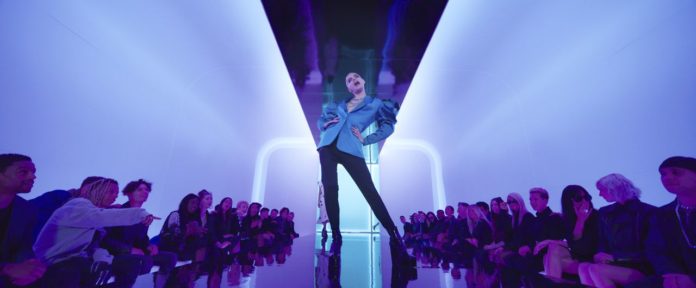
CLEVELAND, Ohio — Most teenagers have moments when they dream about becoming a culture-shifting celebrity.
Granted, such lofty aspirations are often nothing more than ego-pleasing angst-fueled delusions, but there are those who — perhaps amped up by social media — not only reach for their dreams but demand to be seen at a young age.
That’s the essence of “Everybody’s Talking About Jamie,” which debuts Sept. 17 on Amazon Prime Video.
Originally inspired by the 2011 documentary “Jamie: Drag Queen at 16,” the award-winning hit musical “Everybody’s Talking About Jamie” made its stage debut in 2017 followed by a successful run in London’s West End.
Now Broadway veteran Jonathan Butterell, who developed and directed “Everybody’s Talking About Jamie,” makes his feature film directing debut bringing the story of a teenager in a blue-collar English town who dreams of life being on stage as a fierce and proud drag queen.
We recently caught up with Butterell to discuss adapting “Everybody’s Talking About Jamie” to the silver screen, working with the inimitable actor Richard E. Grant and why the character of Jamie is a warrior.
Jonathan, congrats on the film. When did you first become aware of the documentary?
I saw the documentary about seven years ago. It sparked my imagination. … I had just returned to England after living and working in New York City. Almost straight away I went to the theater in my hometown of Sheffield. I said this story so inspired me, I’d like to make this story for this theater because it felt like the return to home. I then found Dan Gillespie Sells, a composer and pop writer, and Tom Macrae, a screenwriter. They had never written theater before and together we created a stage show.
Naturally, the adaptation of a stage show for film opens up many opportunities to flesh out the story. Where did you see an opportunity to expand Jamie’s narrative?
At the heart, it’s exactly the same story with the same characters having the same arc. Of course, what cinema gives you is scale, which you don’t have in theater. In cinema, I can get onto those streets I knew Jamie would come from. Actually, they were the streets I grew up on in Sheffield. I could use the amazing thing that cinema can do like nothing else and get close and see right into the soul of character and actor. In Jamie’s imagination, he creates these pop videos in his head. So the film could have all of that expansive color, choreography, and design. We were able to create a spectacle on a massive scale. I loved every minute of the transition to film.
A pivotal moment in the film involves Richard E. Grant’s character talking about his drag queen history as Loco Chanelle. The emotional montage delves into the late ‘80s and early ‘90s AIDS/HIV crisis culminating with the death of Queen’s Freddie Mercury. How important was it to provide Jamie and his generation with a history lesson?
I felt that was an opportunity for a generational passing on of the story. It’s massively grounding. When I first met Richard, he asked me why I wanted him? It’s a brilliant question to a director from an actor. It was because he has such soulful and deep eyes that communicate what’s going on inside him. I knew the depth of character that Richard would inhabit so deeply and beautifully. Also, we were there at that time (in the ‘80s). We went on those marches and lost people close to us. I know exactly where I was when I had heard Freddie had died. Although he was the great Freddie Mercury, it felt like it could be any one of us. I lost people close to me and it still resonates really deeply. I wanted to make sure that story keeps getting told.
Considering recent film and television projects (HBO’s “Generation” and “It’s a Sin”) that highlight LGBTQ storylines, do you feel like we’re in a new era?
I hope so. I hope we’re in the era where one character is not there to represent a whole community because there are so many stories that all need telling from women to trans people and people of color. I want to make sure all stories get represented in platforms in which they can tell those stories.
Ultimately the story “Everybody’s Talking About Jamie” tells is about a warrior fighting to be seen, respected and accepted.
He is a warrior. He’s an effeminate, gay, out-there, unashamed, joyful, messy, glorious, fabulous warrior.








